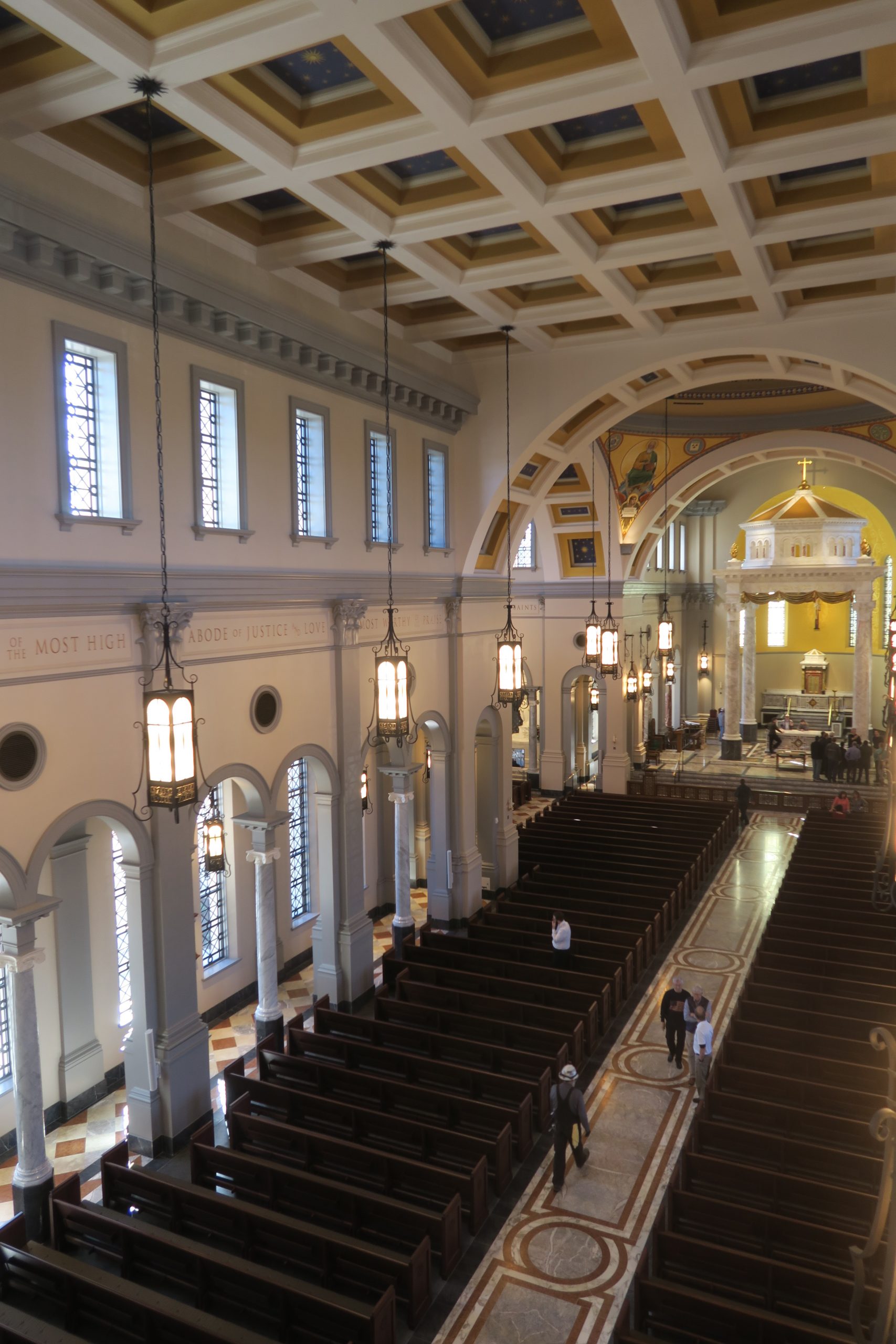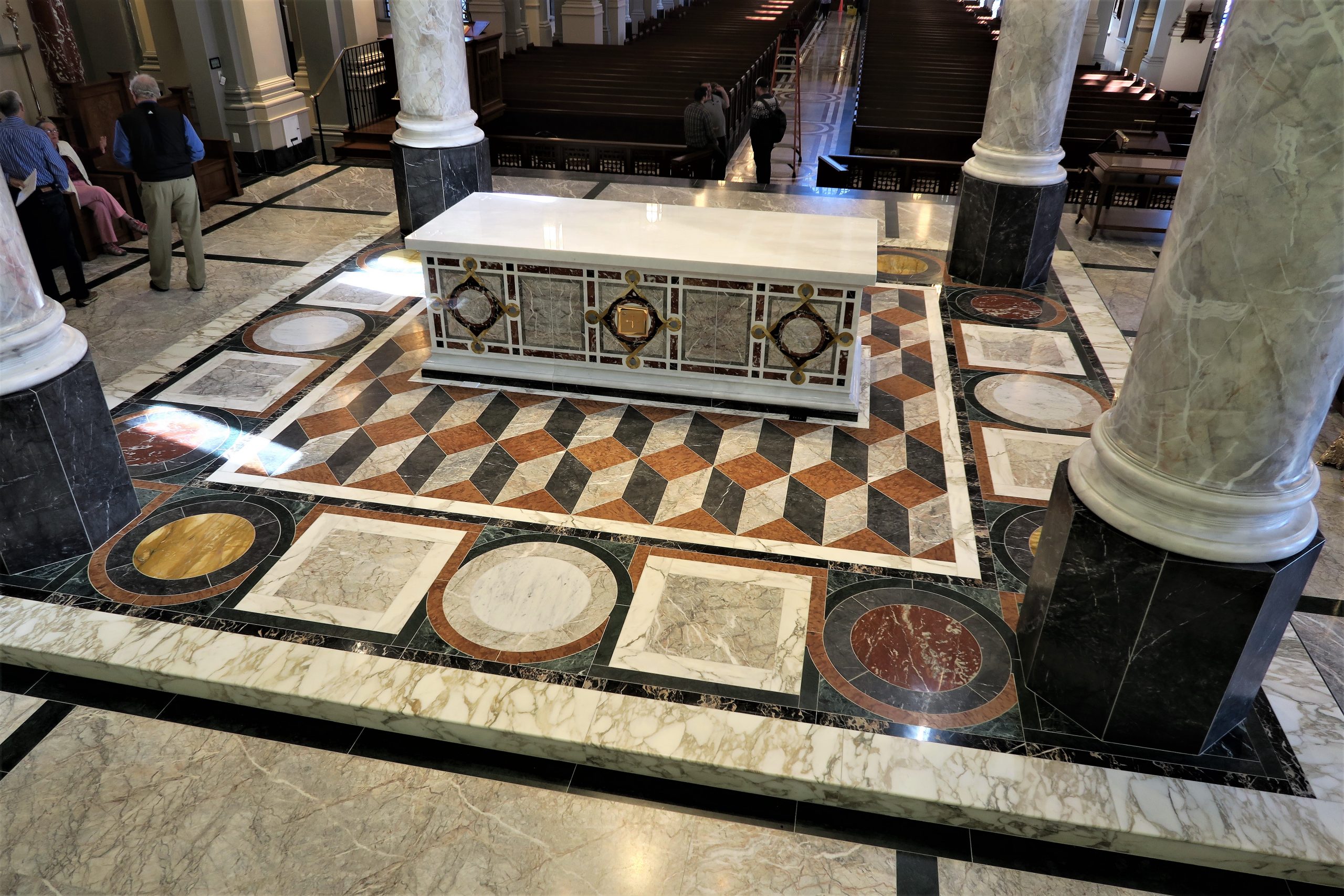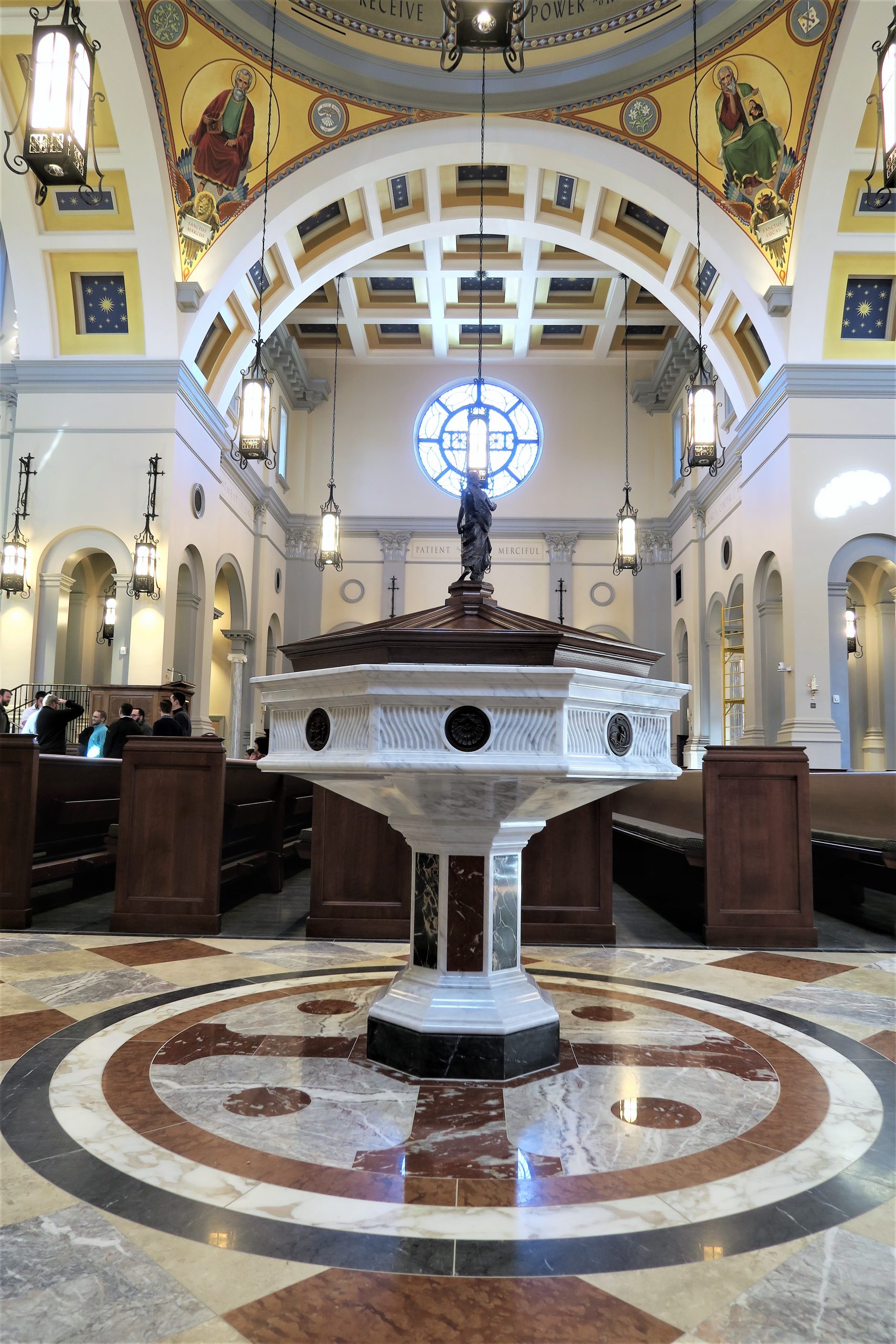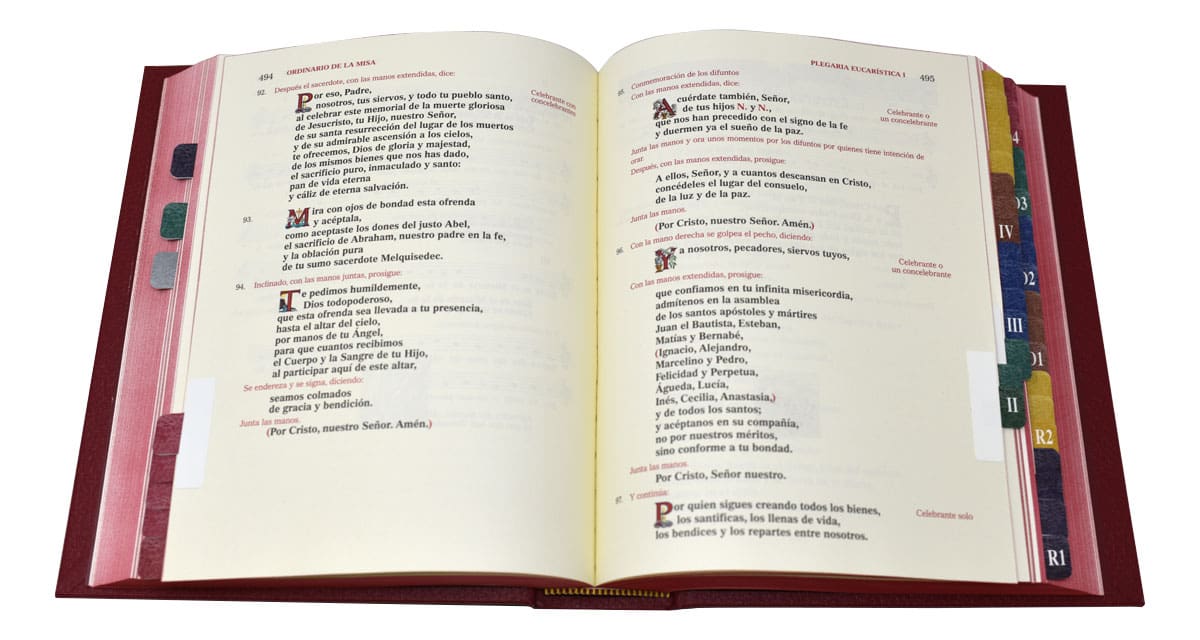Knoxville’s Most Sacred Heart of Jesus Cathedral Pulses with Local and Sacred Tradition
On March 3 of this year, the bishop and the people of Knoxville, Tennessee, together with five cardinals and 18 other bishops, dedicated their new cathedral, named in honor of the Most Sacred Heart of Jesus. The event received local media coverage as a milestone marking the growth of Catholicism in a region where only three percent of the population identifies as Catholic. But relatively unnoticed was the cathedral’s importance in the renewal of Catholic architecture in the United States. With its intentional embrace of the classical tradition, design sophistication, theological fullness, and iconic richness, the construction of the $31 million edifice marks a singular high point in the recent revitalization of Catholic visual and liturgical culture.
From the early planning stages, the diocese and its leaders sought a classical architectural mode for several reasons. First, the building was envisioned to embody a clear Roman Catholic identity with a renewed ecclesiology presenting a deep understanding of the truths of the Catholic faith, including the eschatological emphasis in the documents of the Second Vatican Council, which famously stated: “In the earthly liturgy we take part in a foretaste of that heavenly liturgy which is celebrated in the holy city of Jerusalem toward which we journey as pilgrims…” (Sacrosanctum Concilium, 8). Moreover, within that cultural and theological vision stood the explicit understanding of the leadership role of the cathedral church in a diocese; it was designed to model architectural and artistic excellence for the diocese and even provide for the musical leadership expected of a diocesan mother church by creating ample space for a pipe organ and consideration of the building’s acoustical properties.
Secondly, the design acknowledged its presence in the historically Protestant American South. As such, the cathedral was meant to give outward signs of being “good neighbors,” beginning with a prominent front porch. In a kind of architectural inculturation, the southern tradition of the welcoming porch was engaged while at the same time using a deeply Roman version of the classical orders, combining the local and universal characteristics of the Church in Tennessee.
The cathedral was at first envisioned as a fully limestone structure to indicate its inherent dignity, but to engage the local culture, a mix of brick and limestone was eventually chosen. The design intentionally avoided bright red brick, however, instead choosing a blend of stone-colored Roman brick—characterized by long, slender proportions—which provided a finish with high visual interest as well as a distinctly Roman, public character.
A similar approach to architectural inculturation was taken with the cathedral’s great dome, taken as much from the architectural tradition of local buildings as from the great Catholic tradition. Yet by being topped with a golden cross, the Catholic identity of the cathedral reads clearly.
Woven through the exterior design choices, however, lies a combination of perceived simplicity at the level of the entire design, but with sophistication in its many details. Over the entry doors, for instance, an almost lyrical design of cut stones form elongated and structurally-logical keystones which interlock with the stonework of the walls. On the porch, a prayer to the Sacred Heart of Jesus appears in sophisticated “V-groove” lettering centered around a subtle but legible carving of the Sacred Heart. Even the downspouts which carry rainwater were carefully designed to match the dignity of the building and its use.
The cathedral’s design architect, James McCrery of Washington, DC, compared the design of every part of the building to the Mystical Body of Christ, where each member, no matter how different or differently placed, contributes to the beauty of the whole. The true noble simplicity of the building is achieved in simple shapes and exquisite details, yet each one is given careful attention.
While the exterior uses the relatively subdued colors of the earthly realm, the interior presents itself as the world redeemed, where large scale, decorative richness, and fine materials enchant the viewer. Unlike the grey granite of the exterior paving, the interior suddenly changes to carefully-designed patterns of colored marble, marking the glorified “streets” of heaven.
Looking up from these magnificent floors, giant-order Corinthian flat columns, known as pilasters, line the nave, sitting on pedestals which themselves are nearly six feet tall. Between their capitals, honorific titles for Christ from the Litany of the Sacred Heart give the building an architectural “voice” of praise. An arcade of marble Ionic columns in polished marble tucks between the large pilasters, scaling the high ceiling down to the human scale.
The ceiling is organized by a grid of inset squares, known as coffers, in which the paint changes from the earthly white color of the walls, to golden hues that signify heaven, to blue inset panels filled with glorified stars suggesting the heavens above, which also participate in liturgical worship. As the viewer moves closer to the altar, a great dome rises to 144 feet above the floor, claiming the symbolic number of the height of the walls of the Heavenly Jerusalem in the Book of Revelation (21:17). Within the cathedral’s dome, a 25-foot image of Christ with his Sacred Heart exposed stands surrounded by the saints in a heavenly garden, an iconographic plan developed by the architect together with the cathedral rector and executed by Evergreene Architectural Arts of New York.
The richness of the cathedral’s interior provides a setting for a great stone altar surmounted by a 45-foot baldachino, a four-columned canopy roughly the height of a four-story building.
The large interior provides a setting of awe and grandeur, yet the baldachino scales the great interior down to the size of the altar and, like a picture frame, makes it the natural focus of the viewer’s attention. Beyond the altar, the tabernacle sits under a tiny replica of the baldachino, marking the Presence of Christ both in the action of the Eucharistic liturgy and the abiding Presence in the reserved Eucharistic species.
Seen on the golden rear wall through the baldachino and above the tabernacle, a golden Tree of Life pattern in vine-like spirals extends the reach of the large crucifix, the true Tree of Life that healed the effects of Adam and Eve eating of the tree in the Garden of Eden.
In sum, the patrons, architects and artists of the new Cathedral of the Most Sacred Heart of Jesus have done something not seen for more than half a century: they commissioned an affordable building which nonetheless uses an erudite and recognizable classical mode, fine materials, local customs, time-honored Roman motifs, and a theologically-informed iconographic program. To a faithful Catholic, it might sound obvious to do these things. But recent years have seen many new churches where the client meant well, but lacked the architectural sophistication to hire a classical specialist or the liturgical understanding to see an iconographic program as more than a collection of devotional images. In Knoxville, the cathedral shows a wholistic approach to sacramentalizing a new world on the interior, a place where space and time suddenly change from the limitations of the fallen world to the expansiveness of the restored cosmos.
The cathedral does indeed represent a great local achievement, and congratulations are in order to all involved. But it is also more. With a humble budget in a diocese of a mere 70,000 Catholics, this cathedral has set the high point to date for architectural and theological richness in the postconciliar United States.








Architects, Craftsmen, and Artisans of the Sacred Heart Cathedral:
James McCrery, McCrery Architects, Washington, DC, design architect
Barber McMurry Architects, Knoxville, TN, architect of record
Evergreene Architectural Arts, Brooklyn, NY, decorative painters
Andrew Wilson Smith, architectural sculpture
James McCrery and Fr. David Boettner, Cathedral Rector, iconographic planning
Nick Ring, Traveler’s Rest, SC, bronze sculpture for baptismal font
John Canning Studios, Cheshire, CT, marbleizing faux finishes
Rugo Stone, Lorton, VA, marble fabrication and installation
Clancy Custom Woodwork, Knoxville, TN, millwork
Mountainview Millworks, Hedgesville, West Virginia, additional specialty millwork


